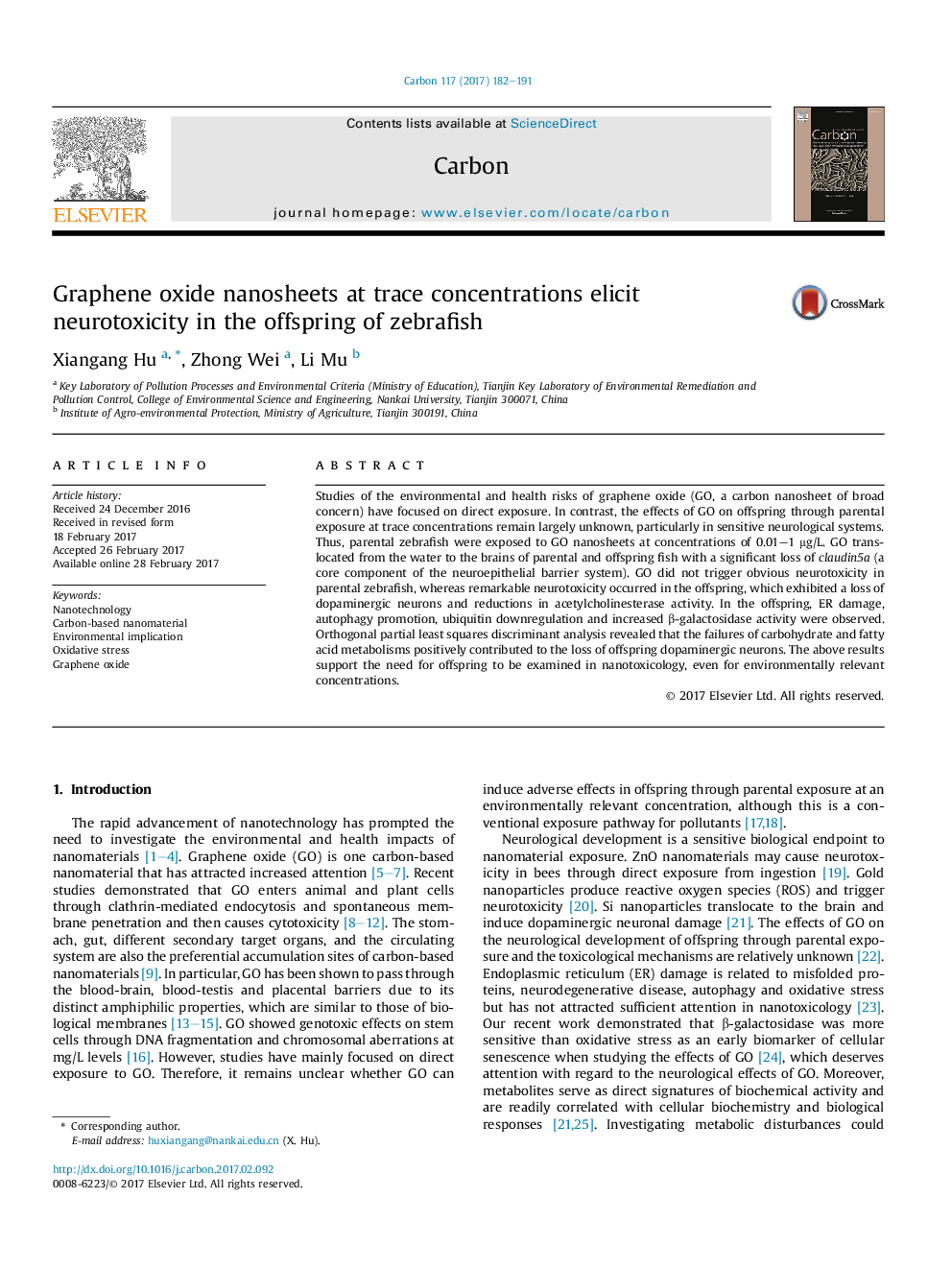| Article ID | Journal | Published Year | Pages | File Type |
|---|---|---|---|---|
| 5432356 | Carbon | 2017 | 10 Pages |
Studies of the environmental and health risks of graphene oxide (GO, a carbon nanosheet of broad concern) have focused on direct exposure. In contrast, the effects of GO on offspring through parental exposure at trace concentrations remain largely unknown, particularly in sensitive neurological systems. Thus, parental zebrafish were exposed to GO nanosheets at concentrations of 0.01-1 μg/L. GO translocated from the water to the brains of parental and offspring fish with a significant loss of claudin5a (a core component of the neuroepithelial barrier system). GO did not trigger obvious neurotoxicity in parental zebrafish, whereas remarkable neurotoxicity occurred in the offspring, which exhibited a loss of dopaminergic neurons and reductions in acetylcholinesterase activity. In the offspring, ER damage, autophagy promotion, ubiquitin downregulation and increased β-galactosidase activity were observed. Orthogonal partial least squares discriminant analysis revealed that the failures of carbohydrate and fatty acid metabolisms positively contributed to the loss of offspring dopaminergic neurons. The above results support the need for offspring to be examined in nanotoxicology, even for environmentally relevant concentrations.
Graphical abstractDownload high-res image (195KB)Download full-size image
